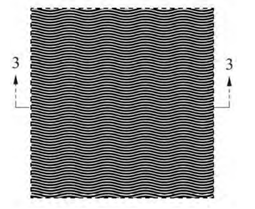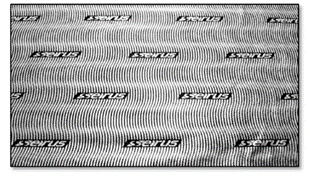Addressing a matter of first impression concerning the scope of prior art relevant to a design patent infringement analysis, the US Court of Appeals for the Federal Circuit concluded that “to qualify as comparison prior art, the prior-art design must be applied to the article of manufacture identified in the claim.” Columbia Sportswear North America, Inc. v. Seirus Innovative Accessories, Inc., Case Nos. 21-2299; -2338 (Fed. Cir. Sept. 15, 2023) (Prost, Reyna, Hughes, JJ.)
Columbia owns a design patent that covers an ornamental design of a heat reflective material. Seirus markets and sells products (e.g., gloves) made with material that it calls HeatWave. An image of Columbia’s patented design and Seirus’s HeatWave material appear below:

Columbia Patented Design

Seirus HeatWave
Columbia sued Seirus for infringement. After the district court granted summary judgment of infringement, Seirus appealed to the Federal Circuit. The Court issued its decision in Columbia I, concluding that the district court improperly declined to consider the effect of Seirus’s logo in its infringement analysis and resolved certain issues that should have been left to the jury. The Court therefore vacated summary judgment and remanded for further proceedings.
On remand, the district court held a trial. Before trial, the district court limited admissible comparison prior art to “wave patterns of fabric,” declined to instruct the jury that “prior art” referred to prior designs of the claimed article of manufacture, and declined to instruct the jury that it did not need to find that any purchasers were deceived or that there was any actual or likelihood of confusion among consumers in the marketplace. Seirus was permitted to admit three prior art references that disclosed fabric, and Columbia was precluded from distinguishing the references by arguing that they did not disclose heat reflective material. The jury returned a verdict of noninfringement. Columbia appealed.
Among other things, Columbia challenged the exclusion of evidence and jury instructions concerning comparison prior art, and the jury instructions implicating Seirus’s logo.
The Federal Circuit began by discussing the appropriate prior art comparison in the context of design patent infringement. Citing its 2008 en banc decision in Egyptian Goddess v. Swisa, the Court explained that under the ordinary-observer test governing design patent infringement, prior art can help highlight distinctions and similarities between the claims and the accused design. For instance, when a claimed design is close to a prior art design, small differences between the accused design and the claim design are likely to be important. Conversely, if an accused design copied a particular feature of the claimed design that departs from the prior art, the accused design is likely to be regarded as deceptively similar to the claimed design, and thus infringing.
The question of first impression before the Federal Circuit was the proper scope of comparison prior art that may be [...]
Continue Reading
read more

 Subscribe
Subscribe


